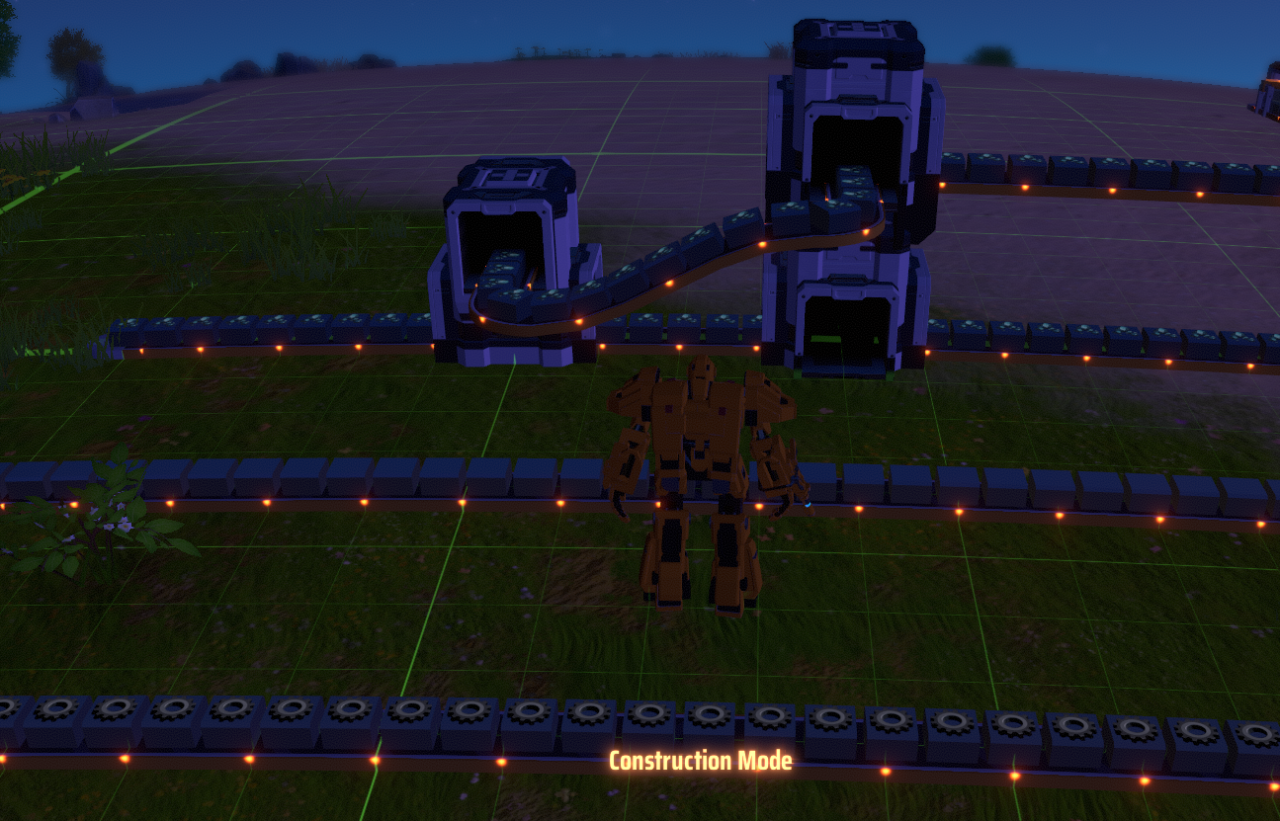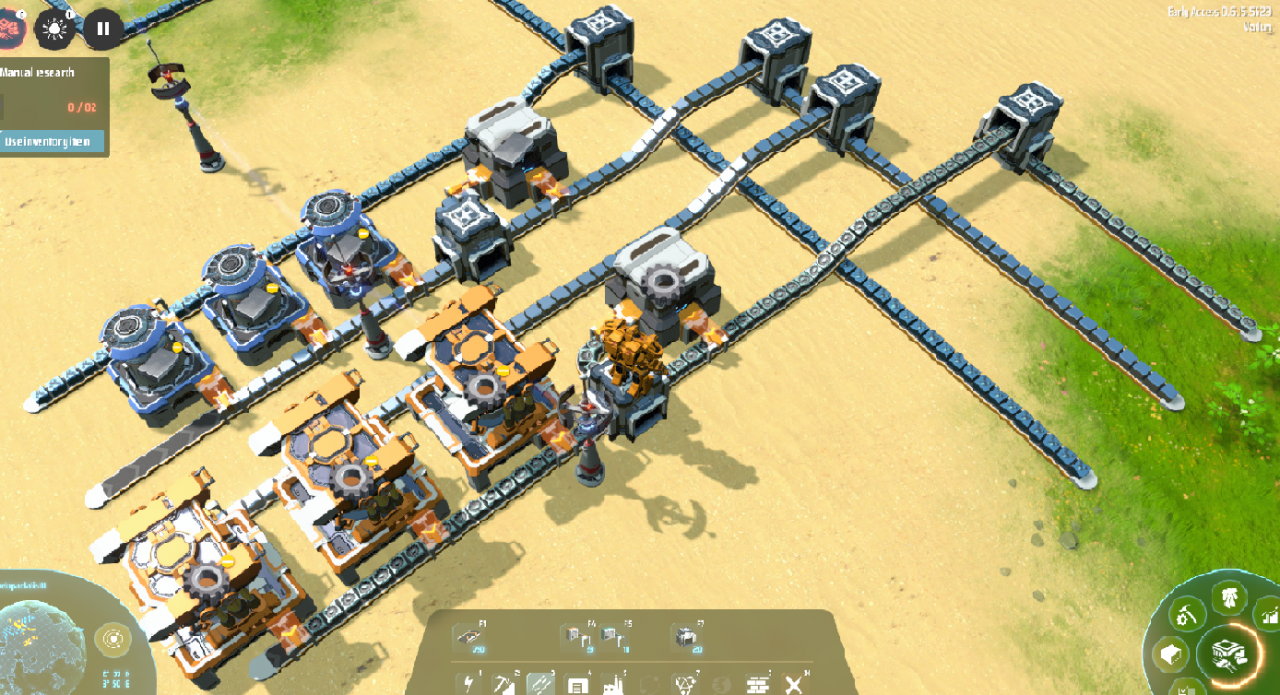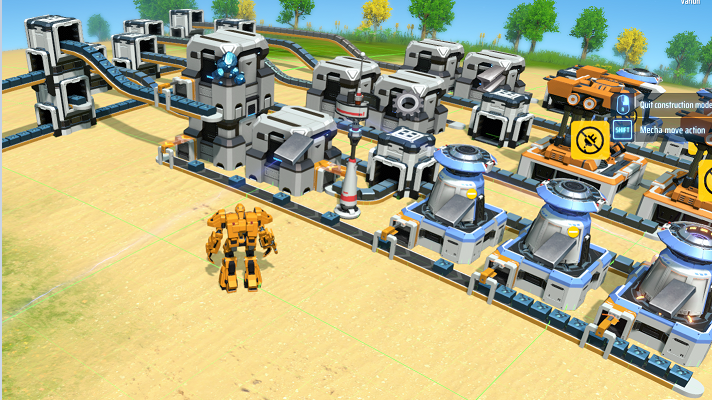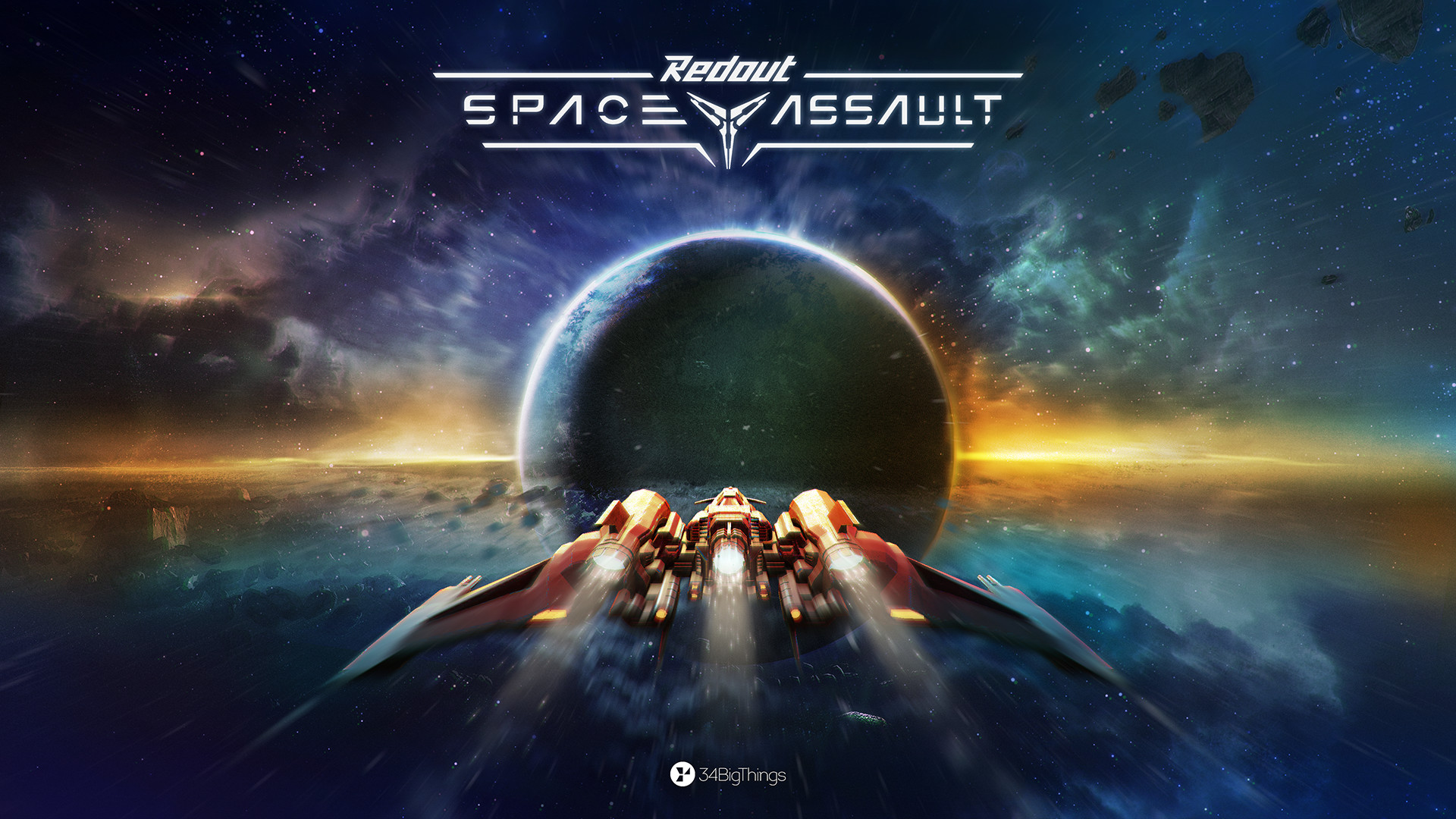You could try getting away with every 3rd line, though. If you plan to always have all your factories on one side of the bus, and don’t foresee having to randomly belt materials down the length of the bus, then it could certainly work.
I really don’t recommend trying every other line. This is too close for splitters to be placed next to each other, and you won’t have any room to do merging (shown below).
You’ll know you’re on the equator because it’ll be a thick green line.


Containers don’t have priority settings like splitters do. You will also be limiting the throughput of your line to your sorter speed. And you can’t stack containers on splitters or vice versa.
—
They can be used to cleanly change elevations.

Here you can see an example of using containers to pull resources off a higher level of the bus. If you wanted to do it this way, this could potentially save you from having to push your factory line further away from the bus (because you wouldn’t need to use the distance to drop the belt height).
However, I don’t recommend doing it this way, explained below.
For example, if your bus is handling too many iron ingots for one belt, you’ll have to use a 2nd belt. And let’s say you are pulling iron ingots from the bus to make gears in one factory, and steel in another, in that order. So after your ingots pass the gear factory (reducing the fullness of the belt), merge the upper belt down to fill it up again.
Related Posts:
- Dyson Sphere Program: Power & Production Math Stuff Guide
- Dyson Sphere Program: How to Use Energy Exchangers (Balancing Your Local Power Network)
- Dyson Sphere Program: Production Chain Layouts
- Dyson Sphere Program: How to Transport Titanium to Your Planet
- Dyson Sphere Program: Energy Exchange Examples 2022

